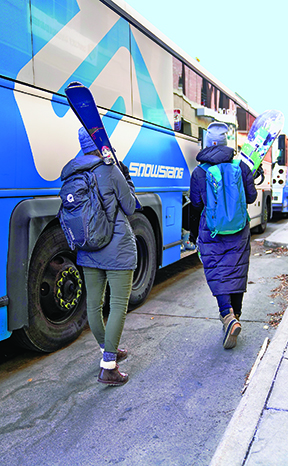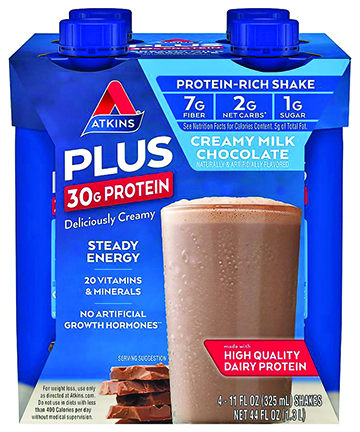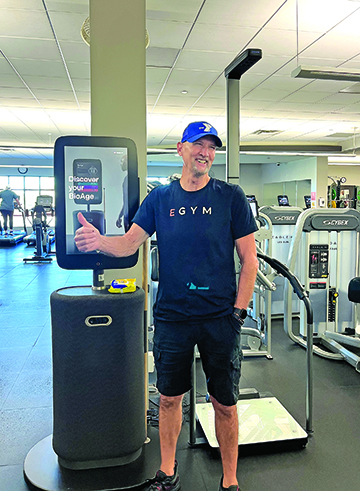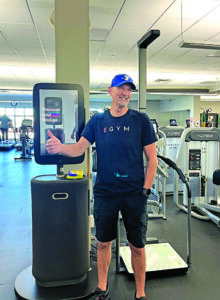
by Laura Lieff | Feb 19, 2024 | Glendale City News
by Laura Lieff
Returning for a second year as part of the Super Rugby Americas (SRA) league, the American Raptors team faces fierce competition. In addition to the Glendale team, the SRA league is comprised of six other franchises — defending champions Peñarol Rugby (Uruguay), Cobras Brasil XV, Selknam (Chile), Yacare XV (Paraguay), and two teams from Argentina, Dogos XV and Pampas. All the clubs will be traveling to and from South America and the United States, with several ga

Full Force: Feofaaki Pulu carries the ball in an American Raptors match against Yacare XV at Infinity Park. (Photo by Seth McConnell)
mes slated to be played at Infinity Park throughout the 2024 season.
“With the goal of providing a pathway to international rugby for high caliber players, and creating a fanbase that brings new players to rugby, SRA continues to provide a unique competition over twelve rounds, with teams playing matches at home and on the road,” says Frankie Deges, Media & Communication Manager for Super Rugby Americas. “Additionally, with the inclusion of the American Raptors in 2023, SRA represents the coming of age of the Superliga Americana de Rugby that was first played between 2020 and 2022.”
Launched two weeks before the world went into lockdown due to COVID-19, Superliga Americana de Rugby successfully returned in 2021 and 2022. Many have recognized this tournament as the catalyst for Chile’s first-ever qualification for Rugby World Cup, and Uruguay beating the USA Eagles to take the first spot in the Americas Qualifying system.
Strong Team
Comprised of 35 players, the American Raptors staff is excited for the year ahead and is thrilled to have a talented pool of returning and new players.
“The American Raptors’ mission to develop the best young American talent is hitting full stride going into their second season of competing in SRA,” says Patrick Guthrie, Chief Operating Officer of the American Raptors. “Marking a strategic blend of experience and fresh young talent

Tough Tackle: Watson Filikitonga gets tackled during a match against Selknam last spring. (Photo by Seth McConnell)
, the Raptors have expanded their lineup by adding 19 promising new players while retaining the skills of 16 seasoned athletes.”
Key players include Mikey Grandy, who is returning for his fourth season, and Diego Fortuny returning for his second year, as well as newcomers Ignacio Mieres and Facundo Ignacio Pomponio. The club began its 2024 season with a three-match road trip to Argentina and Uruguay before returning to Infinity Park for six straight home games. They will finish the season back on the road traveling to Brazil, Paraguay, and Chile.
Raptors games can be streamed on ESPN+ but the best way to enjoy rugby is attending games at Infinity Park. Since its inception in 2007, Infinity Park remains the first and only municipally-owned rugby-specific stadium in the United States. Known as RugbyTown USA, Glendale continues to welcome rugby teams from around the world to play at the 4,000-seat facility.
In addition to serving as the American Raptors headquarters, Infinity Park has hosted several international men’s and women’s rugby matches over the years including the 2019 Pacific Nations Cup and all three 2023 Rugby World Cup Qualifiers for the United States men’s national rugby team. The venue also served as the United States stop on the 2018- 2019 World Rugby Women’s Sevens Series and is home to the annual RugbyTown 7s tournament, which takes place annually during the third weekend of August.
For more information about the schedule, and to buy tickets, visit americanaptors.com/schedule-and-tickets.
Home Game Themes
3/17: Raptors Green Out (St. Patrick’s Day) | Giveaway: Green Raptors t-shirt | Wear green to celebrate the Raptors’ first home game.
3/24: Western Day | Giveaway: Raptors Bandanas | Wear your best cowboy/cowgirl attire to Infinity Park.
4/7: Military Appreciation Day | Giveaway: Camo Koozies | Honoring those who served and active military members throughout the game.
4/14: Mental Health Awareness Day | Giveaway: Stress Balls | Raising awareness and promoting positive mental health.
4/21: Colorado Day | Giveaway: Raptors Keychains | Celebrate everything Colorado with local mascots, local colleges, and Colorado food staples.
4/28: Autism Awareness Day | Giveaway: Fidget Spinners | Raising awareness about Autism at the Raptors last home game of the season.

by Mark Smiley | Jan 19, 2024 | General Featured

 by Mark Smiley
by Mark Smiley
For those who want to hit the slopes but avoid the drive over the President’s Day holiday weekend, Snowstang will be operating and providing service to some of the state’s premier mountain resorts.
Snowstang travels roundtrip to Arapahoe Basin, Breckenridge, Copper Mountain, Loveland Ski Area, and Steamboat Springs every Saturday, Sunday, and President’s Day (Monday, February 19) through mid-spring. All routes board at Denver Union Station, RTD’s Federal Center Station in Lakewood, and at the Wooly Mammoth Park-n-Ride — upper lot (18560 U.S. 40, Golden, CO 80401).
Roundtrip tickets are $25, except for Steamboat Springs, which is $40. Additional discounts are available for seniors (65+) and people with disabilities. Children ages 2 to 11 ride for $12.50 (with a paying adult). Tickets can be purchased at ridesnowstang.com
“If you like to ski or snowboard but don’t like dealing with the holiday weekend traffic, Snowstang is an ideal option,” said CDOT Executive Director Shoshana Lew. “And it’s not just this weekend. If people want to enjoy the variety of activities and special events that’ll be taking place at our partner resorts this winter and early spring, Snowstang is a great travel alternative on any weekend.”
Each Snowstang coach provides seating for 51 passengers, is climate controlled, and has luggage bays, Wi-Fi, a restroom, and USB and power outlets.
“This is our fourth season of serving skiers and snowboarders, and it continues to grow in popularity since it provides a stress-free, safe alternative to get to our world-class resorts,” said CDOT’s Division of Transit and Rail Director Paul DesRocher. “Snowstang is also affordable, comfortable, and convenient, dropping passengers off right near the ski lifts.”

by Glendale Sports Center | Jan 19, 2024 | Glendale City News
The Health Beat
(BPT) – As the new year is here and you may be setting health goals for yourself, exploring the new weight loss medications might be part of this. Whether you’re considering trying them, currently on one, or recently have ended treatment, it’s important not only to consult with your health care provider for guidance, but also to follow nutrition practices that can support your long-term wellness goals.
To help you in sustaining your weight loss journey, Dr. Jonathan Clinthorne, PhD, director of nutrition at Atkins, offers practical advice and recommendations.
“Many patients who are now taking medications to help promote weight loss can face unique challenges,” said Clinthorne. “Health and wellness are long-term goals that go beyond weight, however the good news is that these medications appear to be effective and can really help people reduce their calorie intake by reducing appetite. Ultimately for many people this is an important piece of their wellness journey.”
When your appetite is suppressed and you’re eating less, it becomes more important to focus on nutrition quality and make every bite count. Here are some important factors to keep in mind if you’re taking weight loss medications, and tools to help keep you on track.
- Focus on maintaining lean muscle
Losing weight typically involves losing some lean muscle tissue, so it’s important that you consume enough protein to help minimize the amount of muscle lost. One way to do that is by following eating patterns that prioritize protein, like the Atkins approach, which has been shown to be helpful for preserving muscle tissue during weight loss. Overall, it’s recommended to seek meals and snacks that are higher in protein, including lean meats, seafood, eggs, low-fat dairy, and nuts. Also, don’t skimp on exercise; combining resistance training with higher protein intake is typically the best way to preserve lean tissue during weight loss.
- Make sure to get your vital nutrients
Since weight loss medications can suppress your appetite, your everyday food choices will matter even more. Be sure that the foods you do eat are not full of empty calories and added sugar, but instead are sources of the vitamins, minerals, and other nutrients that your body needs, such as vitamin D, calcium, magnesium, zinc, protein, and fiber. Many of the newer weight loss medications may also reduce thirst, so make sure to stay well hydrated. Smoothies and soups are great ways to incorporate more nutrition and hydration into your day, without seeming like an overwhelmingly large meal.
- Find healthier ways to satisfy cravings
It’s important to understand that if you haven’t made nutrition and lifestyle changes, it’s likely you will regain weight if you stop taking these medications. You may also find that your cravings for certain foods — like sweet things — will return when stopping treatment. However, that doesn’t mean you have to deprive yourself of all the tastes that you love.
To help you stay on track as you work toward your wellness goals, Atkins offers delicious, indulgent low-carb and low sugar recipes, and other options that can help satisfy your cravings for your favorite foods. You can choose from Atkins nutrition bars and shakes which are uniquely formulated with protein, fiber, carbs, and fat to help support your weight loss journey.
For example, Atkins PLUS Protein & Fiber Shakes are rich in protein, and also a good source of fiber, calcium, and other important vitamins and minerals. Atkins Shakes are portable and a great option to keep you satisfied throughout the day so you don’t end up skipping meals.
“Seek out mini meals like Atkins bars and shakes when your appetite is suppressed, because they provide a one-two punch combining quality protein and fiber,” said Clinthorne. “And for anyone who worries about regaining the weight they’ve lost if they discontinue taking their weight loss medications, Atkins offers delicious products and sustainable low-carb options and recipes that can help support and maintain your weight loss long-term.”
For more information about weight loss medications, and how Atkins can help, visit Atkins.com/weight-loss-medications.

by Editorial Board | Jan 18, 2024 | Editorials

 Billionaire and octogenarian, Phil Anschutz, is the wealthiest man in Colorado, worth almost 11 billion dollars. Befitting a man of such wealth, he desires to have political influence to protect his business interests and have a say on the matters of the importance in the state. Described by many as a rock-solid conservative he is a member of the Colorado Republican Party. He is, however, more of a Bush/Cheney country club Republican and no fan of Donald Trump or the vulgarians (as he sees them) in the party who support him. Over time as with many other billionaire businessmen he finds himself drifting to the left or perhaps the Republican Party under Donald Trump is moving to the extreme right.
Billionaire and octogenarian, Phil Anschutz, is the wealthiest man in Colorado, worth almost 11 billion dollars. Befitting a man of such wealth, he desires to have political influence to protect his business interests and have a say on the matters of the importance in the state. Described by many as a rock-solid conservative he is a member of the Colorado Republican Party. He is, however, more of a Bush/Cheney country club Republican and no fan of Donald Trump or the vulgarians (as he sees them) in the party who support him. Over time as with many other billionaire businessmen he finds himself drifting to the left or perhaps the Republican Party under Donald Trump is moving to the extreme right.
A couple of falls ago he hosted a conclave of billionaires at his Sea Island Resort off the coast of Georgia. There they decided to support Ron DeSantis as the best person to dethrone Trump after his January 6th shenanigans. They poured in hundreds of millions to that end which now appears for naught.
An extremely private man Anschutz never publicly states his political preferences as that would make him a target for those who would oppose him. Your chances of getting to meet him are on par with you meeting up with Bigfoot. He has set up in Colorado an intricate web of front groups to express his views and undertake his political agenda. He has control or influence over including inter alia The Gazette (Colorado Springs), Denver Gazette, Independence Institute, Complete Colorado, Advance Colorado, The Lobby, Leadership Program of the Rockies, Camp Fire Colorado (RIP) Rocky Mountain Voice, Caucus Room, and Colorado Peak Politics. Publication of an article from one outlet is quickly republished in one or more of the other outlets to amplify the message.
The message these days from Anschutz world screamed by Dick Wadhams, Jon Caldera. Jimmy Sengenberger and various others is how awful the new grassroots Colorado Republican Party is and, in particular, its Chairman Dave Williams. Virtually the only publication supporting the Colorado Republican grassroots and Williams is the recently formed and anonymous RINOwatch Colorado which does a good job, but it is a David versus Goliath battle.
Anschutz also has indirectly controlled the Colorado Republican Party for over three decades by he and his allies generously contributing to party activities. No one reflects Anschutz views more than two-time State Republican Party Chair Dick Wadhams, who sits on the board of Anschutz’s Independence Institute. Wadhams is fond of quoting former U.S. President Calvin Coolidge: “The chief business of the American people is business.”
But the business of America is not looking too good according to Anschutz. Democrats control the U.S. Presidency and Senate. Even worse, the national Republican Party is increasingly dominated by Donald Trump. In Colorado, the Democrats control every statewide office including governorship and have supermajorities in the State House and Senate.
It is not that Anschutz won’t do business with just about anyone. He is purported to have made a deal with Governor Polis where he would not support his Republican opponent, Heidi Ganahl, if Polis would stop Democrats from attacking his business interests. Each man lived up to his side of the bargain.
Democrats have turned Colorado blue by changing the election rules from everything from open primaries to mail balloting and ballot harvesting. Anschutz is at fault for this predicament as he fought none of those changes because they hurt the hated grassroot Republicans and assured ever more moderate squishy Republicans like Joe O’Dea that Anschutz prefers. His idea of a great Republican these days is Liz Cheney. He contributed the full amount allowed to her disastrous re-election campaign in 2022 in his own name, which he seldom does. He views the social issues important to the grassroots like abortion, gun rights, parental rights, and school choice as tedious and a distraction from the chief business of the American people.
The rudest shock came this last March when the grassroots under Dave Williams took over the State Republican Party. The prior party chair, Kristi Burton Brown, drained the party dry before leaving to join Anschutz’s Advance Colorado. Anschutz and his business allies cut off all funds to the Party expecting Williams to go belly up. But Williams found funds from small donors and other sources like charging Republican Presidential candidates large fees for participating in the Colorado Republican Party Primary. He has found innovative ways to fund lawsuits against the Party’s enemies. Worst of all Williams has become a strong favorite of Donald Trump.
Williams has become the odds-on favorite to replace Doug Lamborn in CD 5 following Lamborn’s shock retirement while continuing to be Party chair to the horror of Anschutz world. If grassroot Republicans also win CD 3 and CD 4, which is certainly possible, the grassroots would control a great deal of money and power with Williams becoming Colorado’s “Grassroots King.” If Trump became President, Anschutz could then be facing fierce enemies locally and nationally. Trump and Williams could then join together for revenge. All the tens of millions Anschutz spends annually on all of his front organizations would be of little value.
Anschutz’s detractors would like to envision, if this would come to fruition, Anschutz in one of many mansions mumbling: “Rosebud.”
— Editorial Board

by Charles Bonniwell | Dec 15, 2023 | Editorials
Editorial —


Denver’s new Mayor Mike Johnston, upon assuming office earlier this year, declared that his top priority was housing the homeless. It is not clear whether the politically correct term is “homeless” or the newer “unhoused,” but either appears allowable for the time being. On Johnston’s first day in office, he declared a state of emergency around homelessness and prioritized housing 1,000 homeless people in his first year as mayor. He had learned, as so many politicians had under COVID-19, that you can do things under an emergency that you could never get away with in “normal” times.
Not to let grass grow under his feet he went on a tour of the city’s 74 neighborhoods hoping to find 200 public plots to place “tiny home” communities where people experiencing homelessness could be housed. As he said, “This is what we think is the most important crisis the city is facing.” But with only a month to go only about 250 people have boarded under the program so far.
It may come as a surprise to some newcomers to Denver that housing the homeless has not always been the top priority of a city with now over 711,000 people. “The greatest good for the greatest number” is definitely not a guiding principle of the new progressive Johnston administration.
Of course, there have always been unhoused people in Denver since its founding in 1858, but the so-called homelessness crisis did not reach full public awareness until the 1980s with the dropping of certain housing programs by the Reagan administration and the widespread deinstitutionalization of the mentally challenged. Even then the crisis did not seem so overwhelming that all other city businesses had to grind to a halt.
Denver’s first progressive mayor, Frederico Peña, convened a taskforce in 1984 which led to city funding for a non-profit organization called the “Coalition for the Homeless.” John Parvensky, who would become the head of the organization for 37 years, joined in 1985. It had at the time a $100,000 budget and a staff of six. Parvensky has been deemed one the most successful modern Denver entrepreneurs growing his homelessness business to 750 employees and 2,000 volunteers and a budget of over $126,000,000 when he retired.
He was able to do this all while increasing the number of homeless to a little over 3,600 when he left. Following the footsteps of Parvensky, an energized younger staff at the Coalition headed by the new President and CEO Britta Fisher, have managed to grow homelessness in Denver in a single year by an impressive 31.7% to just under 4,000. Even more impressive is her growth in homelessness for the first timers by 120.4%. Even the late Bernie Madoff would have had to give a tip of the hat to that achievement.
Luckily at the right time, the homeless have a true advocate in the city’s new mayor, Mike Johnston. Not since Mayor John Hickenlooper and his “10 Year Plan to End Homelessness” have the homeless had such a champion. But even John Hickenlooper was not willing to suspend all work on any other of the city’s concerns in the name of growing the all-important homeless segment of the population. As Johnston stated, “We took the oath yesterday to commit on taking on this problem.” The new mayor correctly understood that the city could not rely on existing Denverites facing hard times to sufficiently increase the homeless. No, if homelessness was going to continue to be a growth industry in Denver, we needed to attract homeless from all across the country. What better way than to guarantee any person coming to Denver a home as the mayor did. Moreover, Mayor Johnston has promised “funding for wrap around services and it will come from the existing Homelessness Resolution Fund.” In addition, money forecasts will come from Proposition 123, the “Colorado Affordable Housing Financing Fund” which is expected to bring in $300,000,000 annually.
Mayor Johnston sagaciously understands that Denver is at a competitive disadvantage in attracting the homeless due to, at times, brutal winters in Colorado. Thus, we must look abroad for assistance in growing homelessness in Denver. Foreword thinking Mayor Wellington Webb back in 1998 declared Denver to be a “sanctuary city” for illegal immigrants with Executive Order 116. Mayor Hancock cleared any ambiguity over the executive order when he declared that Denver welcomed the “sanctuary city” designation. This allows the “Queen City of the Plains” to partner in a bipartisan manner with Democrat led cities in Texas, like El Paso, and Republican Governor Greg Abbot’s Operation Lone Star to bus homeless illegal immigrants from all over the world right to our doorsteps.
True, we need to share the bounty with other sanctuary cities like New York City, Chicago, and Los Angeles, but there are tens of thousands pouring over the border every day. President Biden and Secretary of Homeland Security Mayorkas have promised to keep the border open as long as humanely possible.
Denver, in welcoming thousands of new homeless customers from across the country, and the world, will dwarf the 1,000 people that Johnston claims he will be housing this year. We have a modest proposition that Denver needs to require the Coalition of the Homeless to go public on the New York Stock Exchange. While homelessness has been a major growth industry in Denver over the last 40 years, its salad days are far from over with Mayor Johnston at the helm. That way the individual investors in Denver could join Mayor Johnston in celebrating the New Year and look for positive returns for years to come.
— Editorial Board

by Glendale Sports Center | Dec 15, 2023 | Glendale City News
The Health Beat
 “It’s a game-changer,” says Tim Torsney, YMCA of Metro Denver member, of EGYM. Torsney has been a member of the Arvada YMCA for 4 years. The Arvada YMCA was the first YMCA in the metro area to offer EGYM in 2019.
“It’s a game-changer,” says Tim Torsney, YMCA of Metro Denver member, of EGYM. Torsney has been a member of the Arvada YMCA for 4 years. The Arvada YMCA was the first YMCA in the metro area to offer EGYM in 2019.
EGYM is a state-of-the-art intelligent strength training system that keeps track of your personal settings and your progress over time. The system is set up in a circuit and users simply scan in and the machines adjust automatically to your settings. Torsney explains, “They are so easy to use, you don’t have to remember what weights you used last time. It remembers for you.”
Torsney, who began using EGYM before the pandemic and continues to use the system, finds this feature incredibly convenient as it eliminates the need to keep track of your previous workouts. The machines take care of it all, making it easy for anyone to fit in a quick and effective workout.
But Torsney isn’t just a casual gym-goer; he’s serious about his health. He’s a runner and avid cyclist, yet he noticed that he had been neglecting his leg muscles. With EGYM, he’s seen significant improvements in his leg strength. This technology has had a profound impact on his overall health and says it has helped significantly in managing his high cholesterol.
Beyond the physical benefits, Torsney values the social aspect that EGYM and coming to the YMCA offers. He is a retired Director of Tax Compliance and Criminal Tax Enforcement with the Colorado Department of Revenue, and, today, the Y is part of his community, where he’s made several friends and emphasizes how important this social element is to maintain a consistent fitness routine. He also has a personal connection, as his daughter, Veronica, also works at the YMCA.
Torsney gives a wholehearted recommendation of EGYM, sharing that even his doctor inquired about EGYM during Tim’s recent physical and planned to recommend the system to his other patients!
At the YMCA, Torsney is finding wellness and the community the YMCA endeavors to offer to all who come to its centers. In this “third place” between work/school and home, the YMCA is a welcoming place. EGYM is offered at 5 of 6 YMCAs in the Denver metro area. Learn more about EGYM, YMCA membership and all the activities and programs available for older adults, and for families and kids. Visit denverymca.org/egym.













